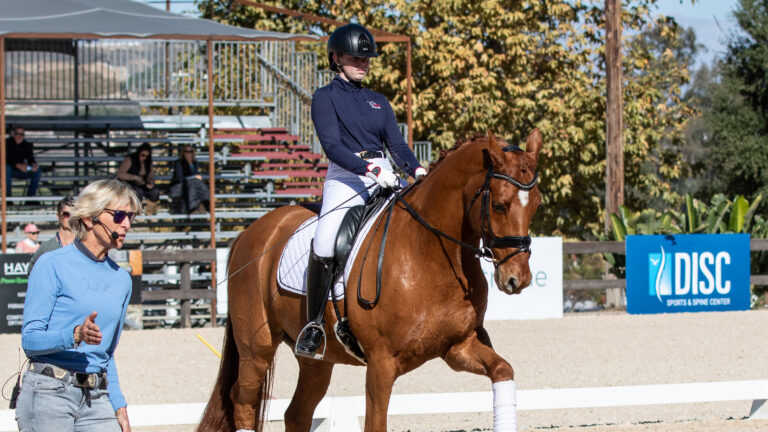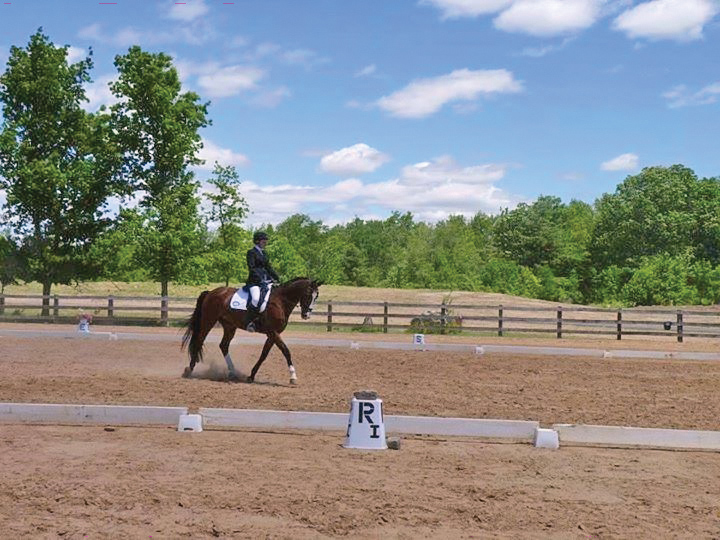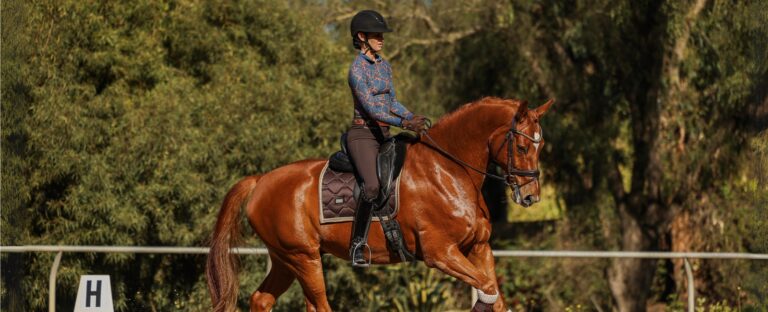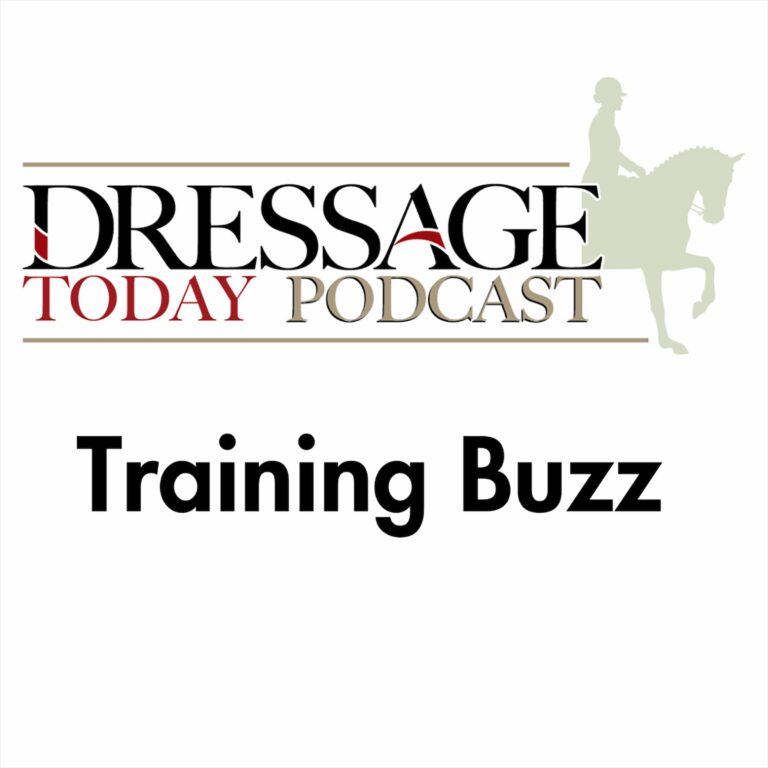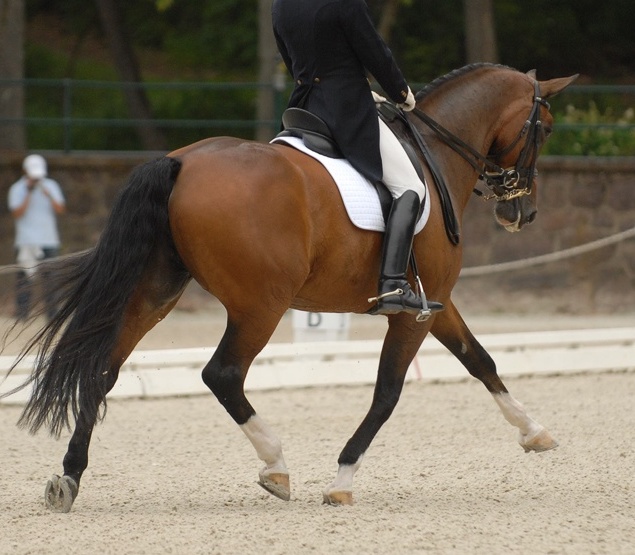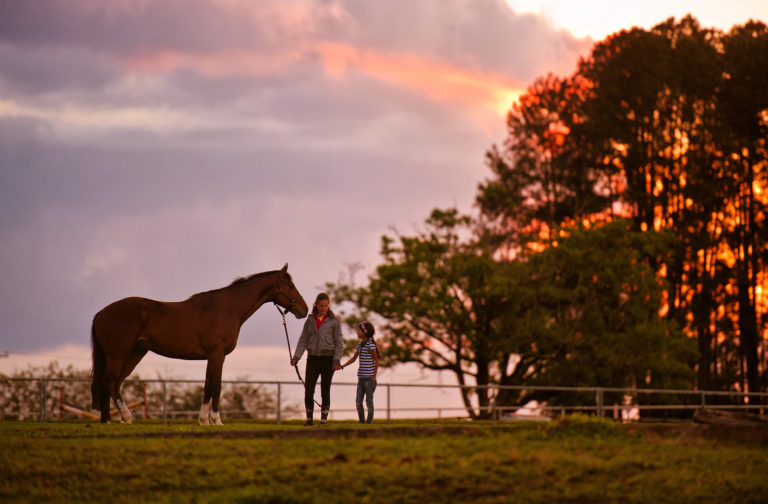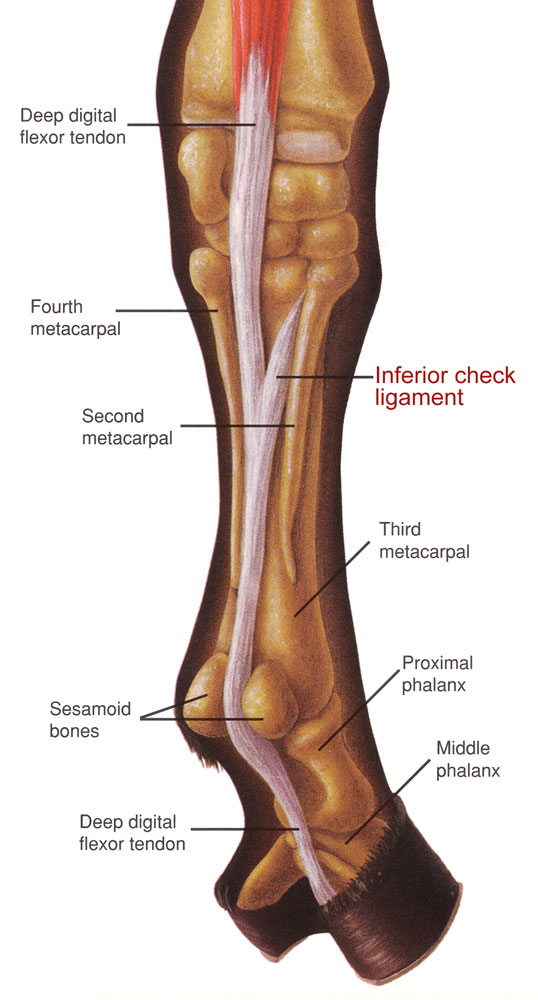Last month I explained the process of recognizing, analyzing and understanding the reasons for your position problems (Click here to read Part 1). If you know the long and short, strong and weak, stiff and overflexible parts of your body, and if you understand the unique system of your movements on the horse, then you are ready to find your specific solutions. But choosing some helpful exercises is only the first step of a long journey; overcoming your own seat problems is a lifetime challenge. Always keep your goal in mind: to create harmony between two individual body movement systems.
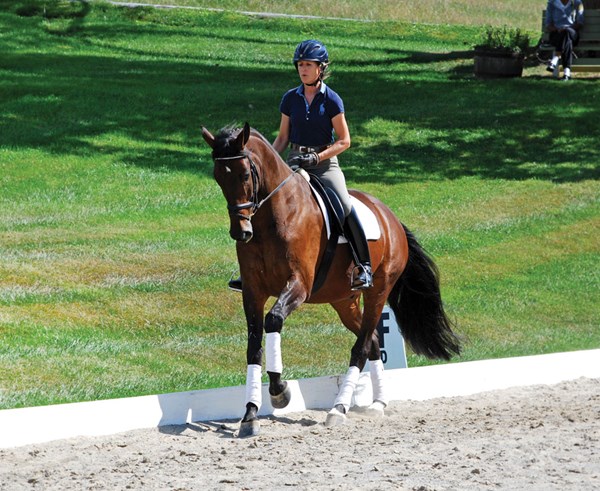
Picture-Perfect Riding
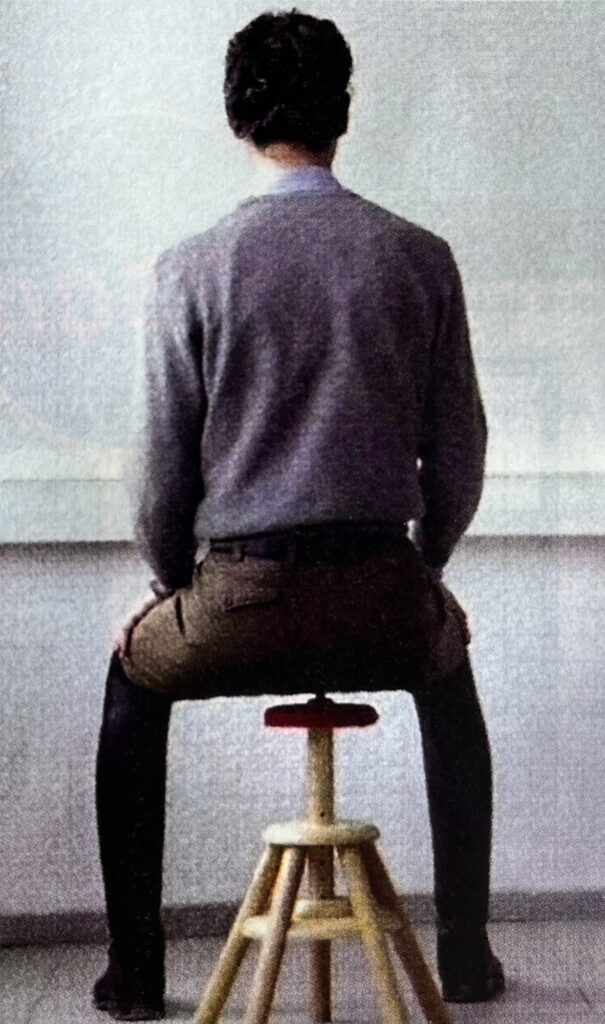
You can find a lot of advice on how to improve your seat from books and workout programs. It’s common for riders to buy into a program of exercises that are supposed to lead to a better seat and thus better riding. But there is no such thing as five miracle exercises for every rider or just one exercise to correct a hollow back.
Indeed, not one single exercise exists to fix any problem. It is a very hard challenge to change the routine of your movements. If it comes to high-level coordination, as required in the rider’s seat, your body knows more escape doors than you can imagine. The same exercise can be done in very different ways, using different muscle chains or different parts in your body for stabilization.
At first, strictly addressing a weak part in your body seems to be effective. But to address only the biggest challenge might not be the best approach. If you try to fight against your own body, your body will always find a way to fight back. Sometimes it is hard to accept your own limitations. But only a sensible, friendly approach will invite your body to cooperate.
The Fitness Factor
Riding is a lifetime sport. The top riders worldwide are much older than most of the best athletes in other disciplines. That is one of the reasons why the fitness factor in our sport is definitely underrated. Good riding requires a certain level of fitness: To stabilize your own body against gravity and flight forces on a moving horse is not an easy job. If riders are not fit enough, their muscles easily get tired and the muscle-control system switches into stress mode. Under stress, your brain always comes up with the same old solutions for well-known problems. There is no energy left for trying new strategies. When muscles get tired, they lose their elasticity and get more tense before they finally give up. Feeling and fine coordination are no longer possible.
If you lack flexibility, strength and endurance, it can be helpful to train in a gym under professional supervision. Training for a stable core, dynamic stability of your spine and better balance will be helpful in the saddle. There are also some special workout programs for riders or specific body training tools. But you will not learn better riding just from a balance board, a balancing (Balimo) chair or an artificial plastic horse. In Germany, there is an old saying: “You can only learn riding by riding.” But in my eyes, riding is not even enough, I’m afraid. Experience doesn’t lead automatically to quality. Poor riders don’t turn miraculously into good riders simply by riding more. As far as I can see, you can learn good riding only by riding well. One of those rare perfect moments, when every part of your body just falls into place and the horse asks in his body language: “What do you want me to do—I’ll try,” teaches you more than 20 average riding lessons. To improve the chance for those moments, you have to practice better basics. Here are your next steps:
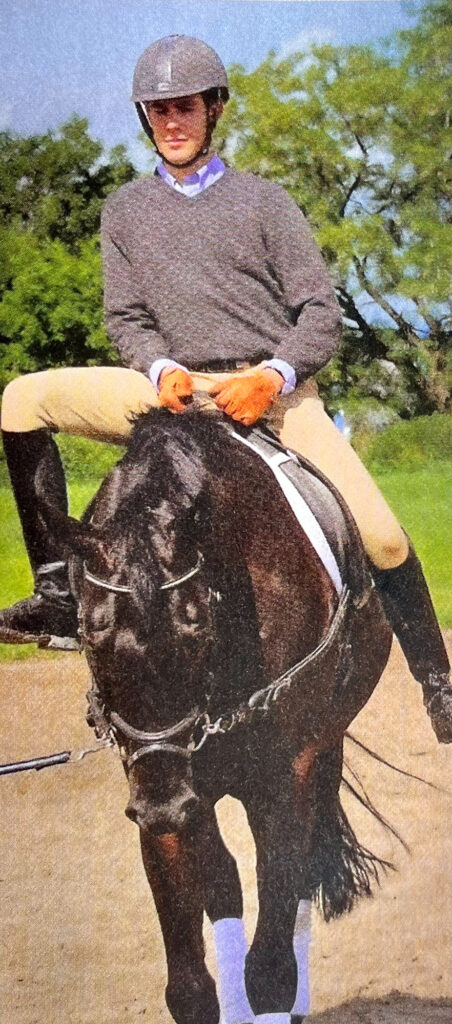
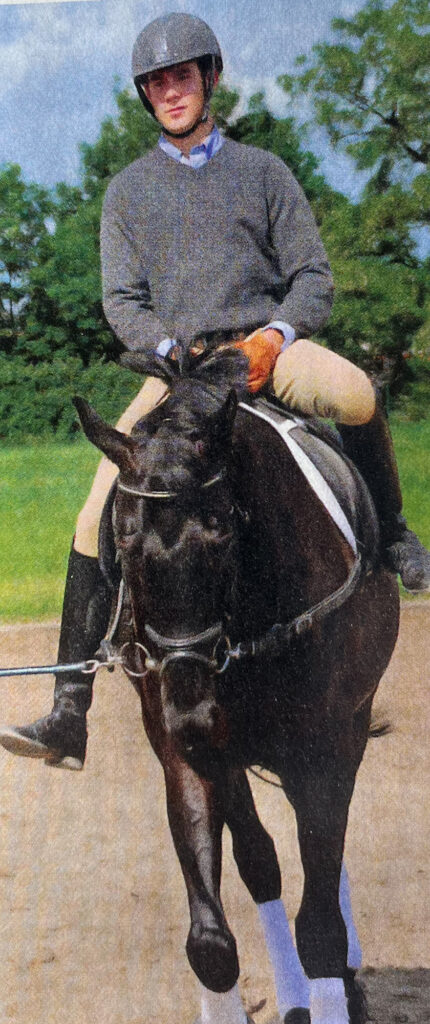
The bicycle exercise, as demonstrated above, helps a rider find positive muscle tension, which is neither negative tension nor completely relaxed muscles.
The Warm-Up
Knowing you have a problem with your position is not enough—you have to feel that problem before you can solve it. If you have a habit of pulling up your heels, it feels normal. Only moving your heels up and down will help you to feel the difference so that you can correct the problem. Dare to move in the saddle and find different positions for the parts of your body.
For instance, you may start in walk and move your upper body backward and forward until you get a new feeling for the real upright position. Never forget the key role of your pelvis position: Only an upright pelvis in middle position—between the extremes of a round lower back and a hollow back—allows an upright upper body. If you want to correct your position, you have to start from your seat bones upward instead of trying to correct the position from the head downward.
Try this: In the rising trot, each time you come down into the saddle, sit in a slightly different spot while keeping your knees and shoulders in place. Even if you just try to sit a little bit more to the left once and the next time to the right, you may develop a better feeling for the correct middle, which is exactly over the spine of the horse.
Body awareness can and must be trained. Some parts of our body are very well represented in our brain. Others are not. A big part of our brain just deals with the movement of our hands, but our back seems to be less important for our perception. Normally, we don’t notice our back until it hurts. To become more aware of your back’s position requires a lot of training.
One helpful exercise is to get your feet out of the stirrups. When the feet give no more information to our inner body balance, the perception sensors in the pelvis just take over. In the dressage seat, our balance depends much more on the pelvis than on the stirrup contact. Without stirrups, you immediately feel your back position much better.
Moving exercises for your legs, such as the bicycle exercise, rotation exercises for your upper body or other controlled movements for legs, shoulders and arms can be part of your daily warm-up routine. But you should know and feel why you choose and use a special exercise. The challenge is to create your specific warm-up routine together with the program for the horse. In the end, both of you should be relaxed. Relaxation in terms of proper classical training means a positive muscle tension—neither negative tension nor completely relaxed muscles. Only positive tension allows your body to properly feel and your muscles to work. Under negative tension, your movements become cramped. In contrast, if you are totally relaxed, you will feel like a couch potato instead of an athlete.
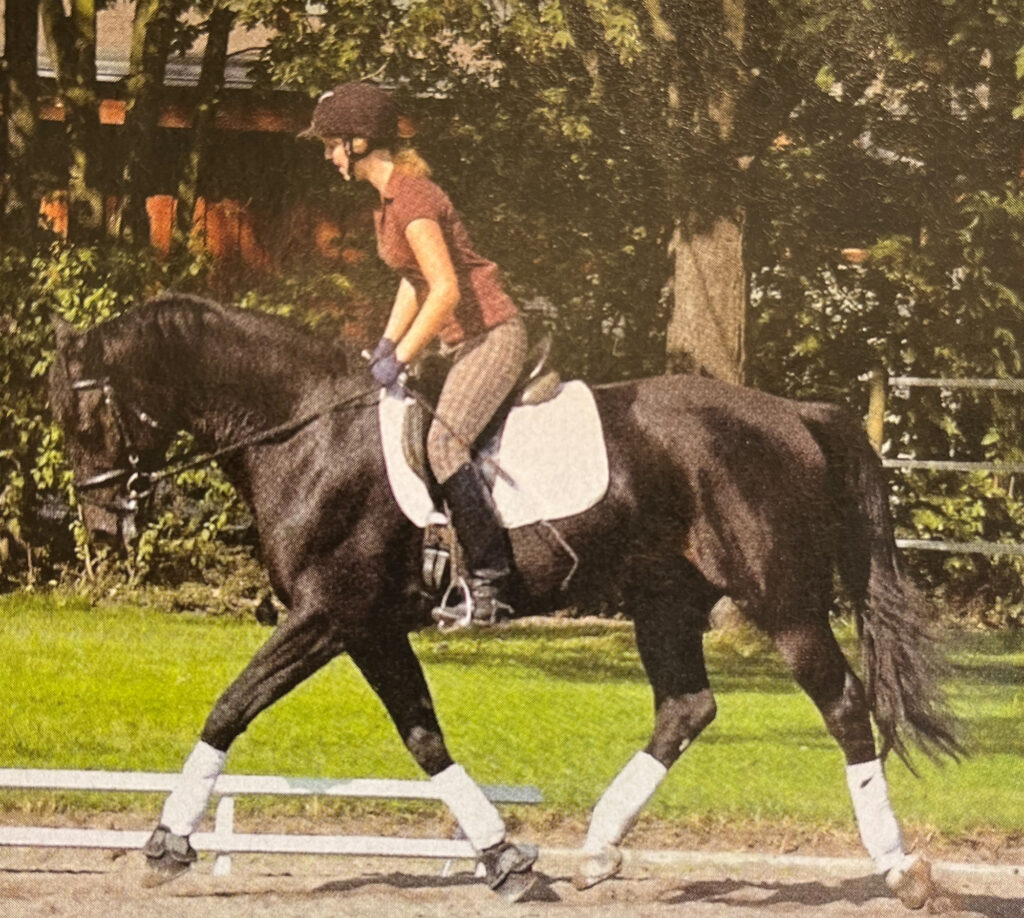
Credit: Jean Christen

Credit: Jean Christen
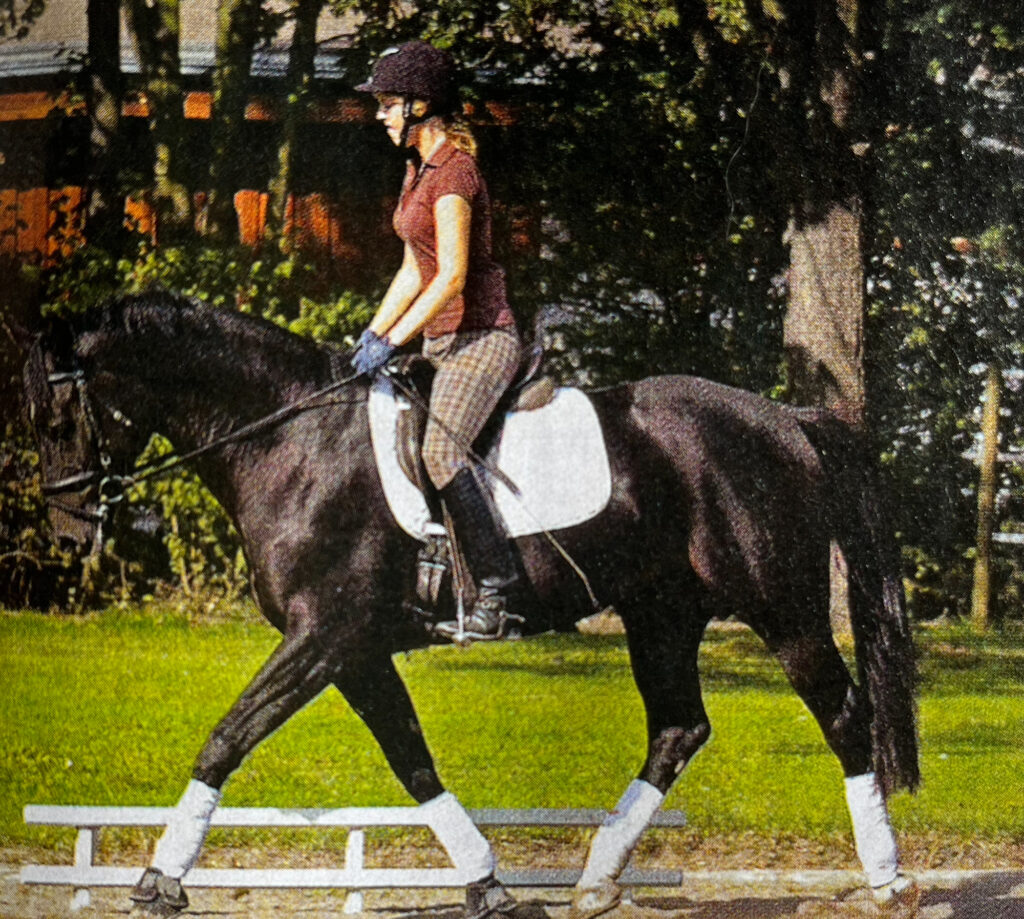
Credit: Jean Christen
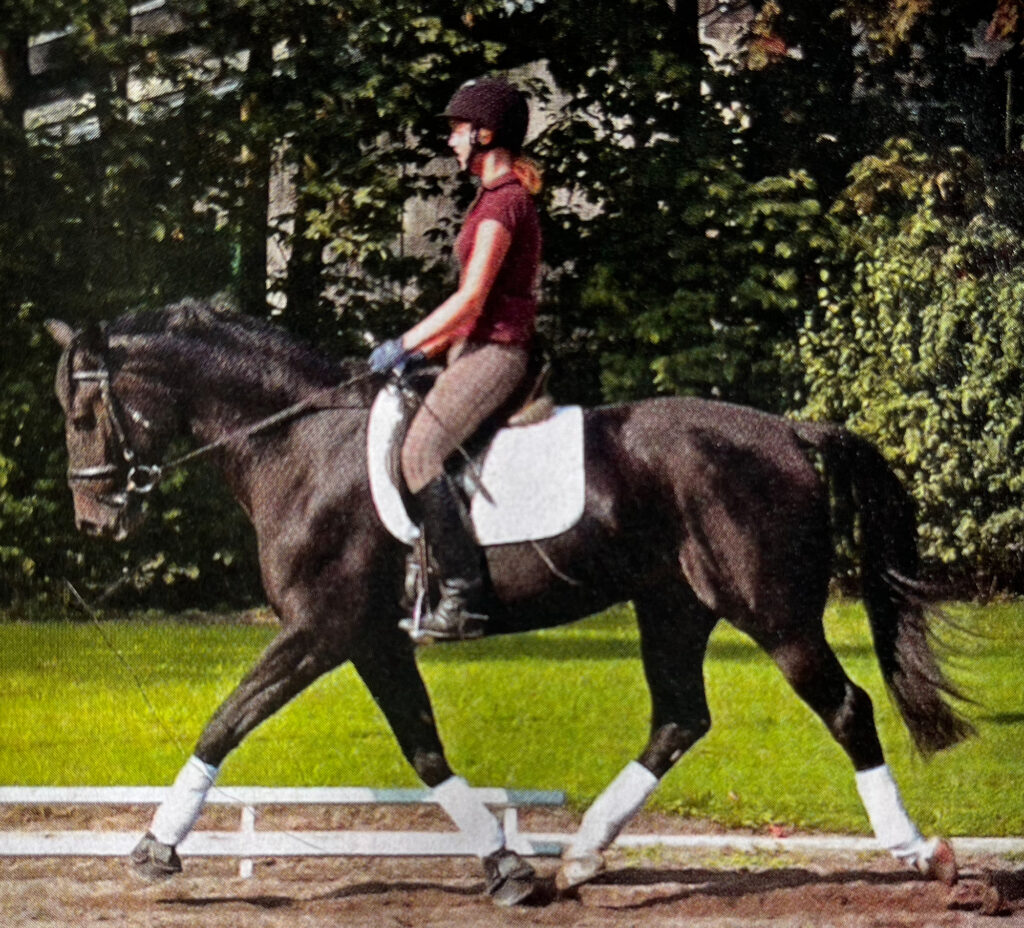
Credit: Jean Christen
Move, Feel and Find Out
There is only one person in the world who can find out which exercises you find most helpful: You. If you have parts of your body that are stiff, you need movements in a good rhythm to get relaxed. If you’ve created bad habits from riding without a good trainer for a long time, then find a trainer who can offer exercises that help you correct the mistakes you’re making. It’s important to understand that when you learn a new movement, the raw form always comes before the fine form. Sometimes it can be helpful to learn a new exercise on the longe line. But a lot of exercises can be included in your daily riding so long as your horse is safe enough to be ridden without stirrups or with long reins.
Steps to Exercising Effectively
- Control your breathing by doing it properly: inhale through your nose, exhale through your mouth. Be sure to give yourself enough time for breathing out.
- First comes the unrefined form of the new movement, then comes the refined form.
- Be aware of a correct middle position of the pelvis: This is possible when you find the balance between a round back and a hollow back.
- A stable core allows the refined coordination of arms, hands, legs and feet.
- Good position is always the result of correct, fine-tuned movements.
- You cannot just hold a good position because you will become stiff. Instead, you have to regain it again and again.
Working on your own seat requires clear focus. You cannot train the horse and work on special position lessons at the same time. But the good thing is that when your seat gets better, the horse will show it, and after a while, you will be able to fit an exercise into your riding whenever you need it.
Solutions Must Fit the Problems
There are many different position problems and even different reasons for the same problem. One common problem is leaning too far back, which means the rider will always be behind the movement. Leaning back seems to give the upper body more strength, like using a lever. But leaning backward just blocks the two backs of the rider and horse. Meanwhile, it is an open invitation for the horse to lean heavily on the bit. To find out the reasons for this bad habit, ask yourself the following questions:
- Are you looking down all the time?
- Are you always trying to push the horse forward with your pelvis?
- Do you have weak abdominal muscles?
- Does your horse have the tendency to lean on the bit?
- Do you have very long legs and a short upper body? Leaning back may be an attempt for more control.
- Do you have an overly flexible, unstable core? This often happens if you have a long gap between your hips and thorax.
The solution always has to fit the source of the problem. In this case, to create a better seat with more forward tendency, it is important to think of the key role of the pelvis position. The main goal is a better steady contact with the seat bones.
The interaction between your seat bones and the back of your horse supports your ability to sit upright. You will see: If it’s correct, it’s easy!
Common Seat Problems and New Solutions
Problem: You pull your knees and heels up.
Solution: Ride with extremely short stirrups in a two-point position. In this position, you are not able to pull your heels up, and afterward your muscle memory will help you remember how deep knees and heels function in order to stabilize your seat.
Problem: In the rising trot, you have a stiff, straight upper body without forward tendency.
Solution: Without stirrups, post the trot from your hips with your legs hanging down. Do not grab with your lower legs. This is what causes a stiff upper body.
Problem: Your hands are not steady enough.
Solution: Hold a whip or a small stick under your bent thumbs. In a correct upright position, the stick will not disturb the rein contact and your hands will be upright and calm. Your horse will love it.
Problem: You struggle with the sitting trot.
Solution: Switch from posting to sitting trot with every stride. Then, from one step sitting to two steps posting and so forth. If you get tense in the sitting trot, start to rise again. Even if it’s only for one step, your back as well as the horse’s back can relax.
Isabelle von Neumann-Cosel is the sister of well-known U.S. dressage rider Felicitas von Neumann-Cosel and the cousin of Susanne von Dietze, author of Balance in Movement. Isabelle works as a journalist, author, dressage rider and trainer with a special interest in seat position and the functioning of the aids for riders on every level. She and her cousin co-authored Rider & Horse, Back to Back and directed several DVDs.


